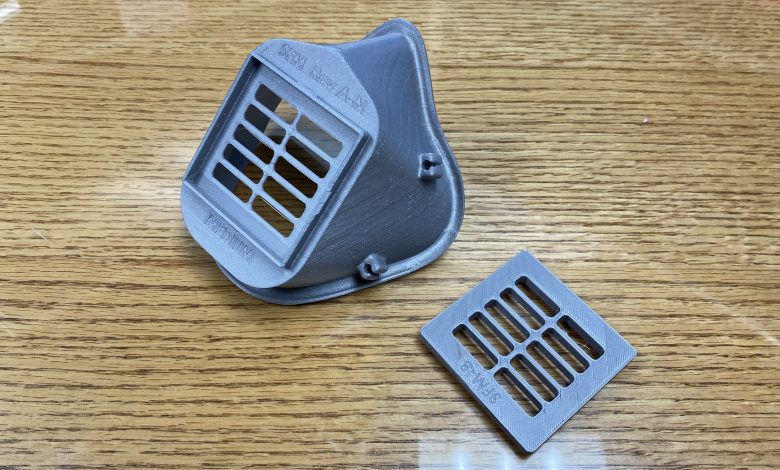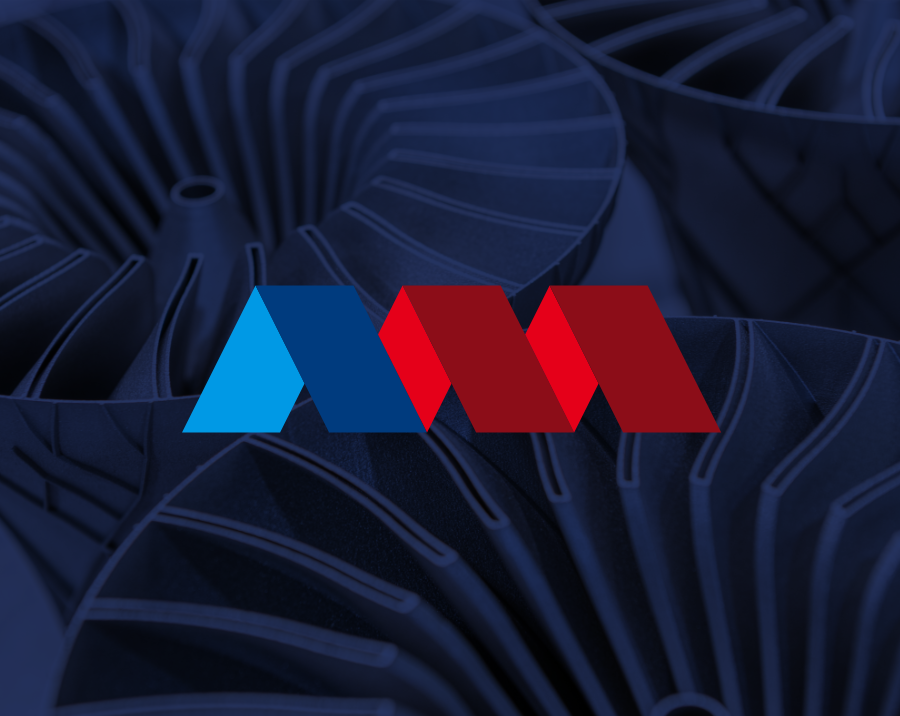

News
America Makes and the importance of a centralized COVID-19 3D printing response
April 14, 2020 | Categories: America Makes News, COVID19

Exclusive interview with Andrew Resnick, Communications & Public Affairs Director, America Makes
April 14, 2020 – As the national institute for additive manufacturing in the United States, America Makes has been in a somewhat unique position throughout the COVID-19 pandemic. With over 200 members from the additive industry and with connections to other government agencies, the group has taken it upon itself to bridge the manufacturing world with healthcare providers in this time of need. Working in collaboration with the Food and Drug Administration (FDA), the National Institutes of Health (NIH) and the Department of Veterans Affairs (VA), America Makes has created an online repository of 3D printable designs that address a need for PPE and other products in healthcare settings.
The goal of the repository is to feature 3D printable designs that have been reviewed by the FDA, NIH and VA, ensuring they are safe to use by healthcare professionals at the frontlines of the fight against COVID-19. America Makes was inspired to launch the effort after seeing how additive manufacturing companies and individual makers were stepping up to fill production needs for medical supplies like face shields. At its core, the repository functions as a centralized location where businesses and makers can find trustworthy 3D printable files and instructions.
America Makes’ role in the COVID-19 effort goes a step further: the organization is actively connecting members of the American additive manufacturing market to healthcare providers in need of 3D printed supplies. We’ve seen similar initiatives started by AM companies, but America Makes’ broad network within the U.S. is especially beneficial.
To learn more about the repository and what America Makes is hoping to achieve with its partners in this time of crisis, we spoke to Andrew Resnick, Communications and Public Affairs Director at America Makes.
3dpbm: At what point did America Makes realize it had a role to play in combatting the pandemic?
Andrew Resnick: Pretty much right away. We are based in Ohio and once the state started shutting down and things started getting serious in terms of social distancing—around that second weekend in March—we realized our position. We started to hear a bit more about the need for PPE around the country and we started getting questions from some of our members about what we could and couldn’t do and whether there was liability involved in 3D printing something for medical use. Our members were also asking what the guidance from the FDA was as far as what was appropriate to 3D print.
In cooperation with our congressman and Haley Stevens from Michigan, we sent a letter to the FDA asking for a clarification around those questions. From that initial letter, we started discussing with the FDA and within days we were already talking about the repository. It happened fairly quickly and it all stemmed from the fact that we were receiving a lot of questions and the knowledge that AM clearly had a role to play. After further conversations with the FDA, we realized the best way forward was to have a central location where all these things could come together, so folks know that what they’re printing will be right for clinical or medical settings. There’s one central place that gives all parties involved the confidence that everything they’re looking at is being reviewed carefully.
3dpbm: With the repository framework established and with the FDA, NIH and VA spearheading the review process, what is America Makes’ specific role?
AR: There are a few functions for the repository. Healthcare providers can submit their needs and they’ll be matched with a manufacturer who has submitted its capabilities—that’s the biggest role for us. We are the collection point for all that information. We have over 200 members in the AM space and we have reach into the entire industry in the country, so it makes sense for us to be collecting that information. Moreover, it’s easy for manufacturers to come to us: they can feel safe giving us their manufacturing capabilities and information because we are a trusted source.
On one side, manufacturers are inputting their capabilities and on the other, hospitals and healthcare providers are putting in their needs. We’re able to match those up. Right now, that’s being done manually: we have project directors who are working behind the scenes as the information comes in, matching that up to capabilities (or vice versa) based on geographic region. Eventually, we are going to try to make that process automated, but I don’t have a timeline yet.
3dpbm: Once you connect the healthcare providers to the manufacturers, do they continue the collaboration independently?
AR: Yes, we’re intentionally not involved in the marketplace aspect of it. We connect the two and then it’s up to them to finalize exactly how the product is made and delivered.
3dpbm: Is there an average time for the design review process right now?
AR: Designers can submit files through our system. The benefit of doing that is it puts them on a fast track for the review from the FDA, NIH and VA. If they were to do it individually and go through the NIH website, it might not get caught in time and it might go into the the review process but take a bit longer. Through America Makes, there’s a fast track: we have a direct link between the designs coming in to the America Makes repository and the NIH review pipeline.
Review times depend on the part. But we are seeing designs go through fairly quickly. I think they are prioritizing need, so masks and face shields are what they’re looking at most right now. Face shields go through really quickly, within a few days. They’re the easiest thing to design and also the easiest thing to review. Now we’ll probably start seeing more face masks. The VA just reviewed a design for a face mask with a filter in it, which took about 2-3 days.
3dpbm: Obviously there are several designs for face shields. Is it still helpful to be submitting new designs for this specific product?
AR: One of the goals of the whole effort with the NIH, FDA and VA is to get a set number of designs for each type of equipment. Right now there are eight designs for face shields so I think the amount of face shield designs will start to slow down a little bit. I think the next wave you’re going to start seeing is more face masks. What we don’t want is to have 150 versions of face shields that have been reviewed for clinical use. That doesn’t really do anybody any good. We want to narrow it down as much as possible to make sure people see that there is a review process and that the designs we feature can be trusted and are appropriate for medical use.
3dpbm: Do you have any advice for anyone thinking about submitting a new design?
AR: I would say go for it. Definitely submit it. The number one thing to realize is that the designs are for the public. If you have a 3D printer and you have capability, or at least the ability to produce a design that you want to get reviewed, submit it. But submit it with the knowledge that we give the designs to the NIH exchange and they become become public information. That means that a manufacturer with large-scale capacity can use the design and a maker who has a couple of 3D printers in their house can reproduce a couple hundred units.
The biggest thing is to pay attention to the need. If you have questions about what’s required in your specific region, call us or reach out to us by email. We’re happy to answer any questions, and we can help inform you about specific requirements and needs based on what requests from healthcare providers we receive.
3dpbm: Several 3D printing companies have launched their own efforts to connect healthcare and industry. Do you think the more centralized approach is more effective?
AR: We’ve seen tremendous innovation in this time and it has been incredible to see the entire industry respond to the call and really challenge itself to come with innovative ways to help. That’s what this industry is all about. The reason we put this site into place is because we wanted to ensure that there was a safe and effective way to ensure that AM is actually meeting the need of healthcare providers. There are some companies that are perfectly capable of doing that on their own, but there are some that might not be taking that into account. People are very well intentioned and trying to help, so we want to make sure that the time it takes to design and make a product is time well spent.
By using our repository, you can find designs that have been reviewed for usage in a medical or clinical setting. We encourage you to use one of these designs so you’re not wasting 2-3 days printing something that can’t be used. I think it’s important to have that central location just for that. It needs to be done effectively.
3dpbm: Have you had any feedback from healthcare providers?
AR: They continue to put their needs into our system, but as far as feedback I haven’t seen much yet. We’re in the process of sending out communications for feedback, and I know there have been some successful matches, which we’ll be highlighting in the coming days.
3dpbm: Anything else to add?
AR: I would just say that it’s important for everyone to continue to check the NIH site—there’s a link to it on the America Makes repository [it can also be found here]. It gets updated daily, so those interested in helping out by printing parts can check back often for newly reviewed models.

